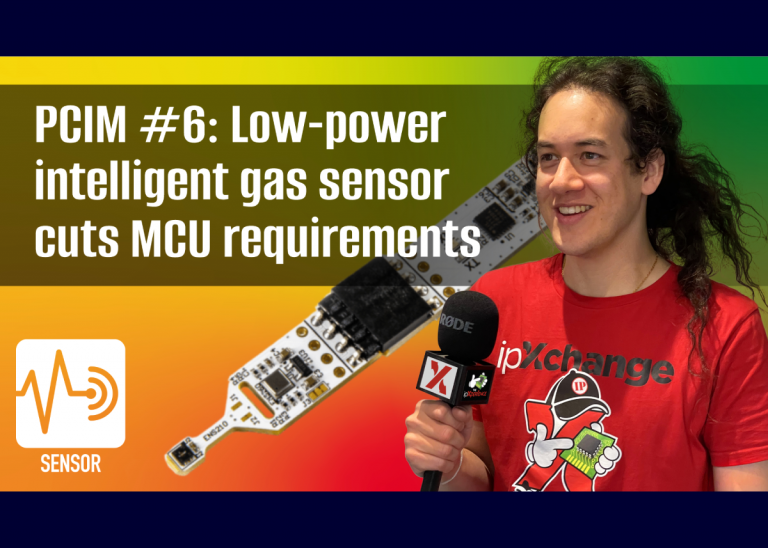ipXchange’s first piece of coverage from SENSOR+TEST was a visit to ScioSense’s stand, which had an impressive number of practical demos to get excited about. Here, we present the first of four demos with Rolf, starting with ScioSense’s latest device: The ENS161 low-power digital metal-oxide multi-gas Sensor! (Try saying THAT with a stroopwafle in your mouth.)
This 3 x 3 x 0.9 mm device detects multiple Volatile Organic Compounds (VOCs), including ethanol, toluene, and hydrogen, as well as oxidising gases. Not only does it boast an operating current draw of just 700 μA in low-power mode – quite remarkable given that this device operates using a controlled hotplate that must be heated to 300°C – ScioSense also eases integration by employing on-chip data processing. This means that an external MCU can receive useful data from the ENS161 without requiring additional software libraries or raw-data processing; total VOC and equivalent CO2 concentration readings, as well as air-quality index classification, are provided directly to the MCU via I2C and SPI interfaces.
The knock-on effect of ScioSense’s intelligent sensor allows designers to use less-powerful MCUs that are often smaller, more cost-effective, and consume less power. This makes the ENS161 a particularly good fit when building battery-operated IoT or wearable devices.
The practical demo shows Rolf spraying some ethanol into a chamber monitored by a grid of sensors, likely the slightly more power-hungry ENS160, based on the readily available board and nearby documentation. As you can see, the response to the introduction of ethanol is fast, and we are treated to a light show as the ethanol particles bounce around the chamber.

